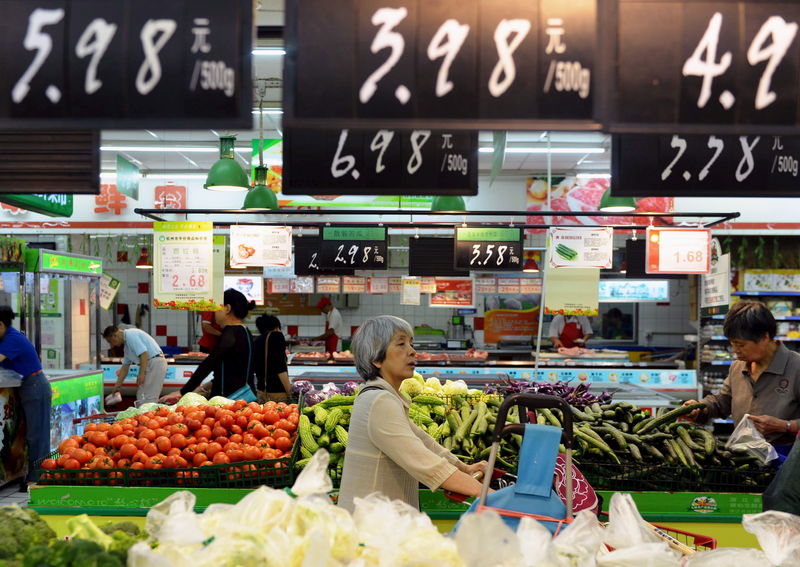SHANGHAI/BEIJING (Reuters) - China's producer prices fell less than expected in March while consumer inflation stabilised, a sign that strong deflationary pressures in the country's industrial sector may be lessening.
Some economists said receding worries over factory gate price declines might point to less aggressive monetary easing in the coming months. They have been watching how inflation evolves this year following a prolonged easing campaign by China's central bank beginning in late 2014, which has boosted credit, but has yet to result in substantial price increases.
Producer prices in March fell 4.3 percent from a year earlier, extending their decline to a full four years, but at a slower rate than a median forecast in a Reuters poll of a 4.6 percent decline.
Economists said the slower fall in producer prices was driven by recovering global commodity prices and also the uptick in construction activity at home.
"PPI has benefited from a pick-up in real estate and infrastructure investment and new orders from the government," said Yang Zhao, Chief China Economist at Nomura Bank in Hong Kong.
"Overall the data is a good combination for financial markets. CPI was flat and so there shouldn't be much concern on policy tightening."
Consumer prices in March rose 2.3 percent, below a forecast 2.5 percent but similar to February's rate of 2.3 percent. The prior month's figure represented the fastest rise in more than a year but the increase was driven largely by sharp gains in food prices following an unexpectedly harsh winter.
EASING MOMENTUM MAY SLOW
Economists broadly agreed that stable consumer price gains around 2 percent were unlikely to deter further easing by the central bank, although some said the pace of easing might now be slower.
"Today's data suggest that the PBOC will be less aggressive in monetary easing, and we now see just one further cut of RRR (reserve requirement ratio) in 2016, instead of three," ANZ said in a research report.
But Julia Wang, Greater China Economist at HSBC in Hong Kong, noted non-food price inflation was still quite sluggish and there was still room for adjustments.
"We still expect full-year CPI to be comfortably below the 3 percent target set by the PBOC this year which means there should be ample room for monetary easing if needed."
Chinese equities were up broadly in early morning trade, led by financial, mining and manufacturing stocks.
A key factor supporting consumer prices, which have trended sideways around 1.5 percent year-on-year since late 2014, has been the relative strength of the labour market.
However, recent data paints a mixed picture on conditions for China's workers. While the official manufacturing purchasing managers' index (PMI) for March showed job losses slowing, a separate private survey from Caixin showed deteriorating labour market conditions in both the manufacturing and service sectors.
China grew at its slowest pace in more than two decades in 2015, as the economy struggled with an extended correction in the real estate market, weak global demand and high corporate debt levels.
